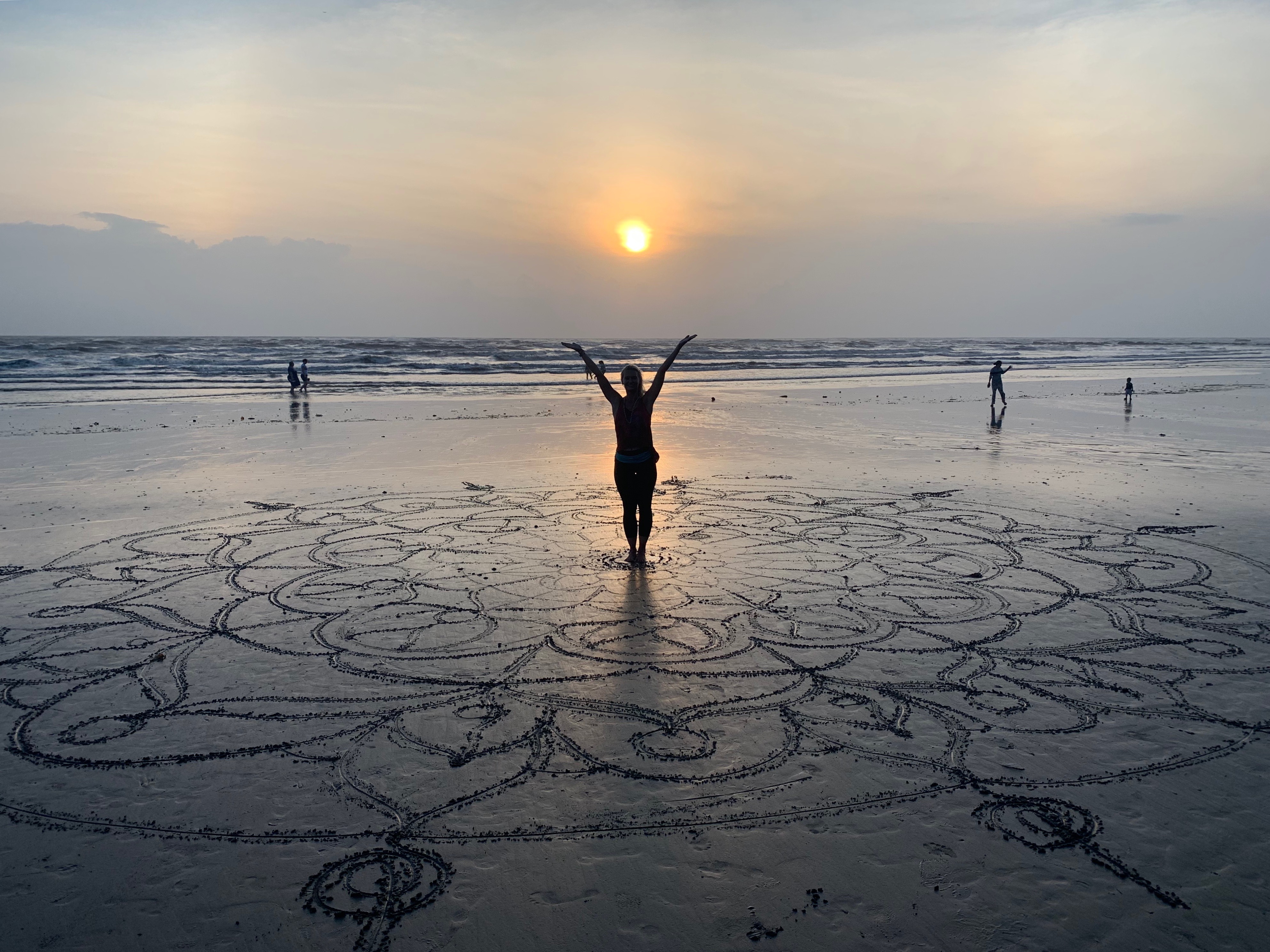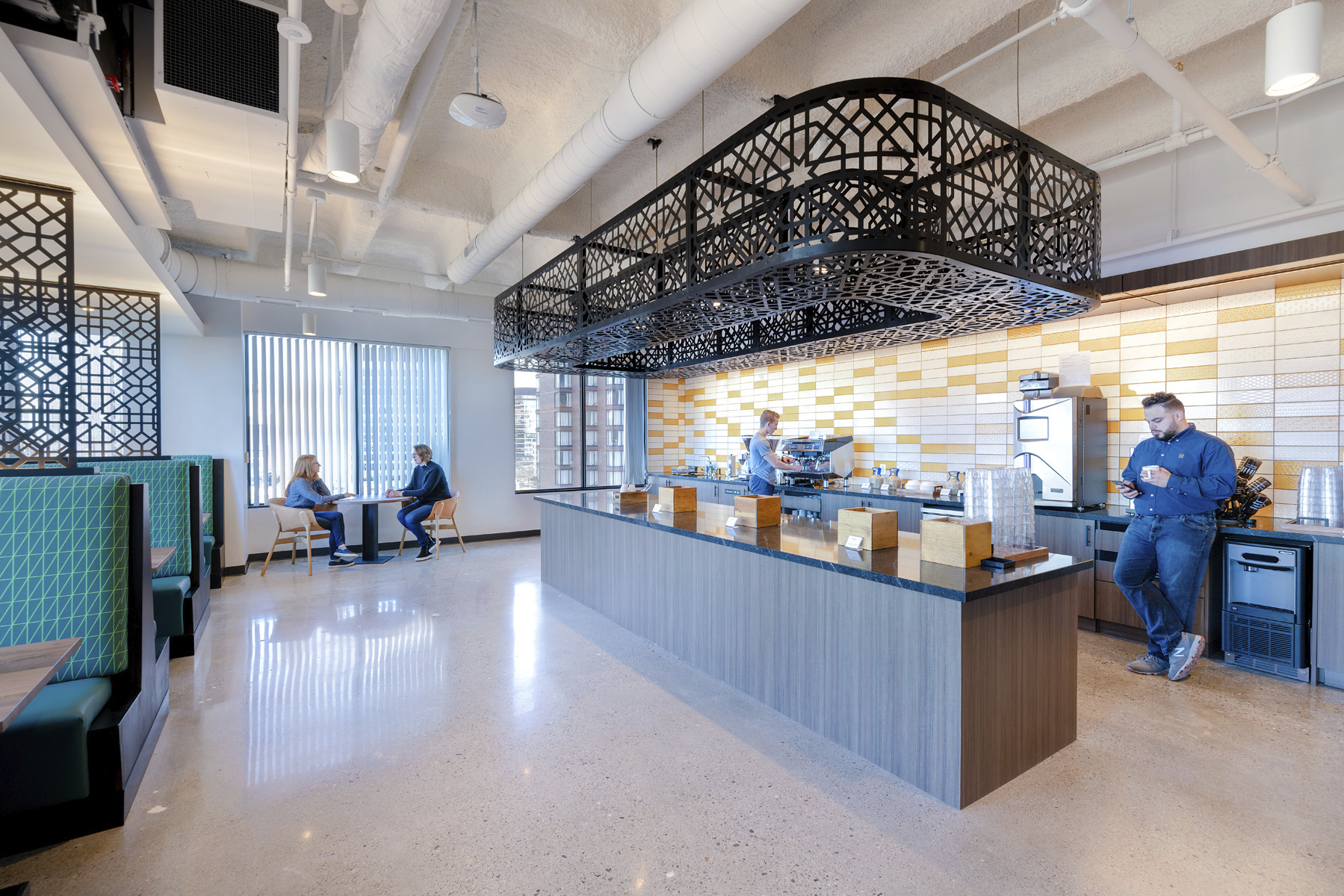Kendra Kettelhut, a workplace designer at SmithGroup, examines the next wave of employee engagement and retention.

Brand and culture go hand in hand. They have been corporate pop words that organizations have focused on for many years now. Thousands of articles have been written about them, businesses have used them to transform their organizations. In today’s ever-moving and rapidly shifting world, how do we continue to create, embrace, and celebrate the next wave of evolution in corporate culture when the demand for attracting and retaining the best and brightest talent is at such a competitive level? How do we define brand with Generation Z (a generation who sees technology as an extension of themselves, rather than a tool to enhance their work) entering the workforce?
According to a Harvard Business Review article back in 2004 (and almost every study over the past 15 years) the employees of the company, the people, are the organization’s most valuable asset. The individuals that work for a company hold the knowledge and the skill sets to further the company. Re-training and re-educating staff take time, energy and, most importantly, financial investment. Employee efficiency and talent determine the innovation and tone of the company. The cultural health of an organization will be determined by the employees – the types of people that are drawn to a particular organization to work there – as well as the level of loyalty that the employees have.
In more recent articles, Harvard Business Review and Fast Company redefined how people are the most valuable asset as well as revealed that sabbaticals in the workplace are on the rise. It’s more than just the people – “it’s how you empower the people.” How we incentivize, motivate, educate and give employees the community, tools, and support to do their jobs best is how we create a more engaged, innovative and successful company. The importance of building organizations that have a shared purpose and mission that their employees are supportive of is paramount. In making people feel engaged, trusted and empowered, not only does the employee who is taking the sabbatical receive the direct benefit of reduced stress and a greater sense of value in their life and interests outside of the office, but what they find surprising is that, “the majority of leaders surveyed said the time away allowed the space to generate new ideas for innovating in the organization and helped them gain greater confidence in themselves as leaders.”
It is not the norm for companies to allow extended leave of absence, however, the increase in this work/life benefit has been on the rise, significantly in the last few years. “Companies offering sabbaticals (both paid and unpaid) rose to nearly 17% of employers in 2017.” This statistic has continued to grow every year. By providing the benefit of a sabbatical the organization sends a message to the employee that their time is valued, their experience is respected, ultimately fostering a level of trust and wellness within the corporate culture. One of the responses from a company who has implemented this into their organization’s culture:
A highly collaborative culture fundamentally depends on trust. When you keep trust at a high bar, and you have confidence that the company will treat you well and you will treat the company well, then good things happen. Trust is the key ingredient in a successful sabbatical program.
– Tim Miller, Fast Company
In addition, this work/life benefit has become more and more in demand by the younger generations entering the workforce, therefore helping companies to attract the best and brightest to foster a culture of energy, appreciation, productivity within their organization.
I happen to work for one of those companies who sees the benefit in allowing for an extended leave of absence. Sitting at a cafe in India, half a world away from my place of work, my office, my job – on my own personal sabbatical, I have surrounded myself in a community of like-minded individuals seeking another worldly experience. We are seeking connection, understanding of one another, and defining our sense of identity. We came from all different places, cultures, and communities, and are now having a shared experience of oneness in a place very different from most of our everyday lives.


Photos courtesy of Kendra Kettelhut
Throughout these days and weeks, I have had many opportunities in which I have observed how the people here are creating their own mini centers of culture. How some individuals are more focused on the group, and building these new communities so far from home, while others are so focused on documenting their individual experiences with pen and paper – like my Gen X self, or via laptop and cellphone, defining themselves, sharing their experience and building their brand through social media posts.
All generations are represented here, and there are a few women who fall into the youngest of the group, no older than 20 years old, members of the new workforce, Gen Z. They post regularly on social media about what they are doing. Cultivating identity and brand through carefully filtered images and curated messages that are deeply rooted in the intended portrayal of how they want the rest of the world to see them. In conversations, one of the women has frequently shared about her brand, her “following”, what people are commenting on and how she has been impacting people. The importance of this sharing, this defining of their individual “brand” in Generation Z that is beginning to enter the workforce is astounding.
In the documentary Social Animals, the impact of social media, specifically Instagram, in the lives of a few Generation Z individuals is depicted. Not only is the importance shown, but the pressure and consequences – unintended and intended – are so interwoven into the cultural social fabric of the lives of this generation. The Center for Generational Kinetics states that 55% of Gen Z are on their smartphones for five or more hours a day. This freshman class of Generation Z entering the workforce cannot avoid social media, it has become a part of the way they communicate, like the first words in the language they learn to speak. This way of life is drastically different from the ways in which Gen X or Baby Boomers communicate and build social communities.

One of the ways we can celebrate this redefinition of the brand for younger generations is to embrace and encourage it in the workplace. Providing opportunities within the confines of the corporate office life to allow for these Gen Z’ers to share and feel empowered to incorporate their own unique voice, and brand, into the larger corporate identity. This could look like structured time in the day for these activities, creating physical spaces within the corporate office that are places that people can gather to be “together” in space while utilizing their independent social media accounts to help tie the corporate brand message in with their own. Perhaps there could even be certain people defined within an organization that is recruited to blend the individual and the corporate in a seamless way, utilizing these tools which are the reality of how this new generation communicates and tells their story. This could turn a potential disconnector and separator into an asset for the unification of brand and culture.
Today’s workforce is now made up of the remaining Baby Boomers, Gen X, Gen, Y, Millennials and Gen Z. All of which have a very different way of expressing themselves and their own identity. Not only do they define themselves through different means, but the level of importance placed on personal brand varies greatly. How they connect socially, how they build community and curate the culture of their lives range drastically. How then do we unite these various types of generations and cohesively umbrella them into a corporate culture that has a single focus, single-purpose, and goals to move an organization forward in growth and success? By valuing the employee and offering them time outside the workplace to decompress, reinvigorate, and find inspiration to come back to the workplace with more knowledge and drive. Embrace what tools they use and unify an organization through finding ways to empower each different generation in the various ways they communicate. Also, by empowering individuals, trusting their knowledge and skillsets, and celebrating brand and culture on the individual level as well as the corporate level, the company will ultimately be successful.

The celebration of brand and culture is shifting. This shift needs to move as quickly as the evolution from one generation to the next starts to make up the workforce population. The demand for work/life balance and refocusing on the individuals’ goals, personal needs and brand cannot be ignored.


You are spot on with this article. Work/life balance is so very important.